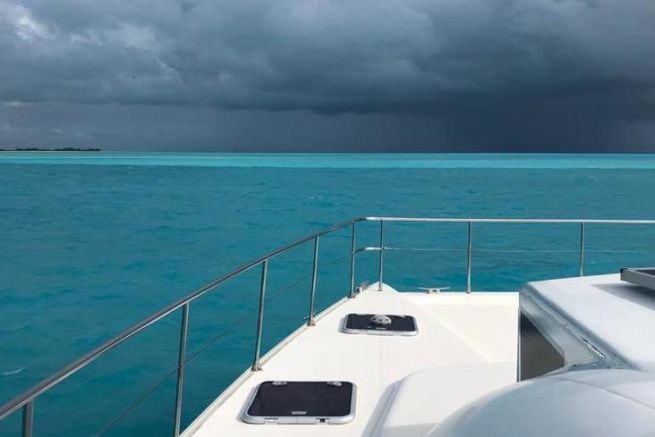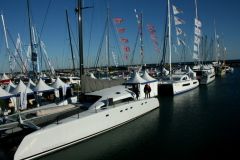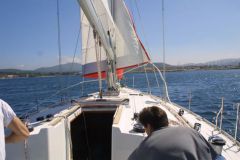Stability: The differences between monohulls and multihulls
The characteristics of stability attached to cruising multihulls bring, without question, an appreciable pleasure. They are, to a certain extent, the guarantee of an additional comfort and safety. However, one should not forget the other side of the coin, especially when sailing in strong winds.
The monohulls are listing. At first, it is impressive, of course. But, the good thing is that these boats, "greeting the gusts", preserve their rigging and sails. They "dodge", thus considerably reducing the surface exposed to the wind. In this way, they create a kind of automatic regulation in the face of potentially dangerous situations.
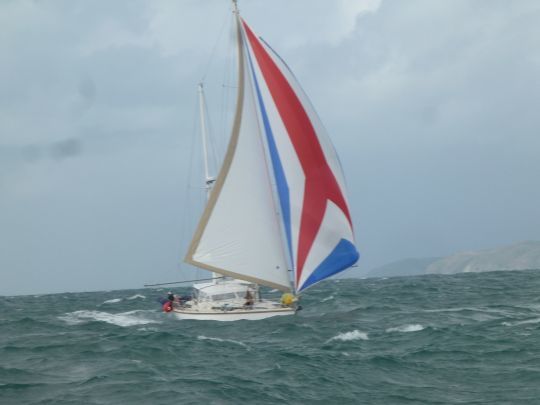
Multihulls behave very differently. One of the most delicate configurations is encountered in "squally" weather or in stormy areas, with light winds and heavy skies. The wind propulsion enthusiast is confronted with a difficult dilemma: to sail or to use the mechanics... In order to move off in wind mode, he has to put out all his sail, because the breeze is light... This is when the raging squall comes, the vengeful overspill, the felonious gust...! Ouch...
The differences in behavior between monohulls and multihulls, linked to their respective stabilities, are clearly visible.
A lack of anticipation will result in a big heel on the "lead carrier" monohull.
On the contrary, the skipper of the multihull will be exposed to very unpleasant penalties:
- Either it is light and well covered, and it risks capsizing
- Either a strong overweight will have given it a reassuring "seat". But then, it is the rigging and the sails that will "absorb" efforts that may exceed their recommended range of use. And then, beware of breakage and dismantling!
Relieve your catamaran in squalls
The good news is that there are effective ways to calm things down very quickly.
Modern multihulls are equipped, in majority, with sails largely favoring mainsails. Moreover, the headsails are almost always mounted on furlers.
In this context, in a violent and sudden oversold, it will be necessary to:
- Give the mainsheet some slack. Not too much, to avoid destructive flapping, but enough to "twist" the sail well, thus removing a large amount of its propulsive force. In doing so, only part of the sail will be working in laminar flow, while at the top, the low-incidence air streams will generate limited lift and therefore less force.
- Partly roll the headsail, without totally hiding it, so as to remain "maneuverable". You have to say to yourself: "now I would like to wear a storm jib, or a jib n° 2".
- If the pace is "arrived" (more than 110/120 degrees of the real wind), and that one has water to run, one can lower of about thirty degrees. The time to let the squall pass and to "feel" the atmosphere. Be careful, however, not to approach the tailwind. This point of sail can be very dangerous because of the risk of involuntary gybing. Also, we will try not to exceed 150 degrees from the true wind.
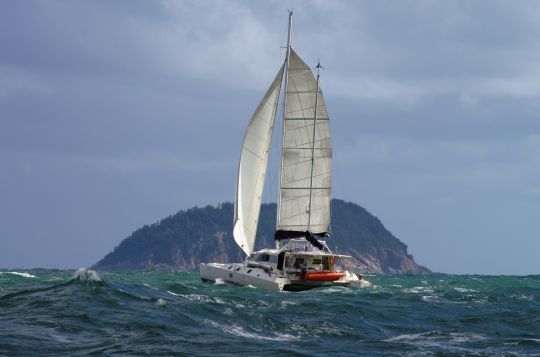
Mistakes to avoid
Surprised by a furious oversold situation, some crews have the reflex to luff up and launch their enginesos This attitude has the dramatic disadvantage of making the mainsail and the headsail flap simultaneously. It gives an impression of "the end of the world" which has a devastating effect on sensitive souls. Moreover, it is a good way to create knots everywhere: in the sheets, topping lift, reefing bumps, etc.
Sailing or motoring as required
Faced with every type of delicate and stressful situation, there is a good attitude to adopt. You have to prepare for it when the weather is still manageable, and then practice it wisely when things get a little "hot".
And finally, there is no shame in using the mechanics. With a very uncertain weather, one of the best dispositions is to reduce prematurely and to advance with the engine in the "soft". When it blows, we stop the machines and we fine-tune the settings.
